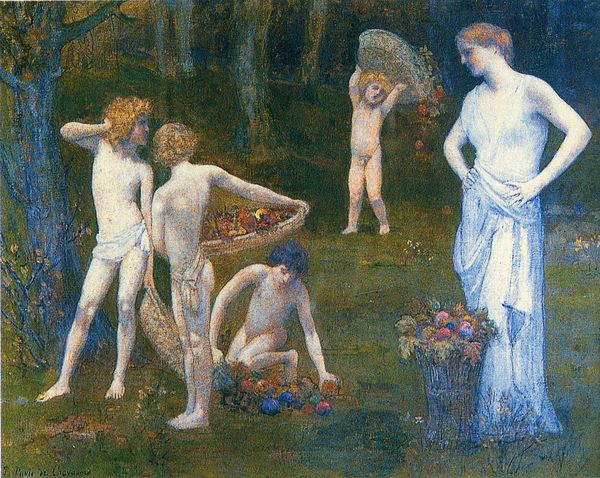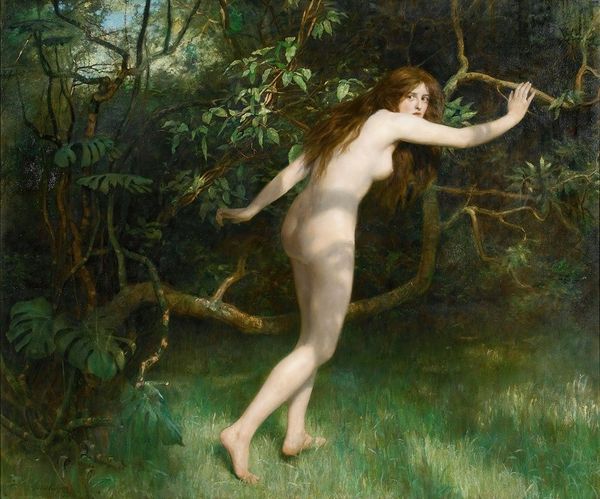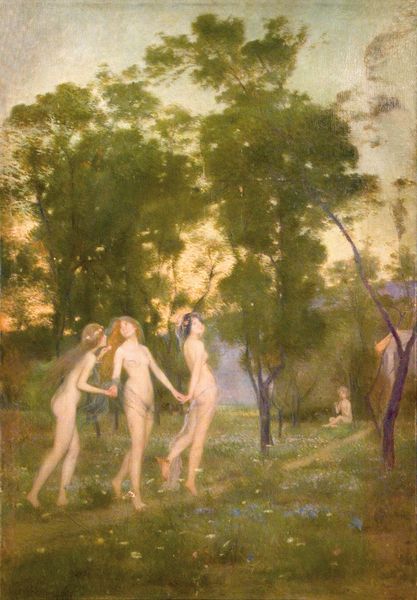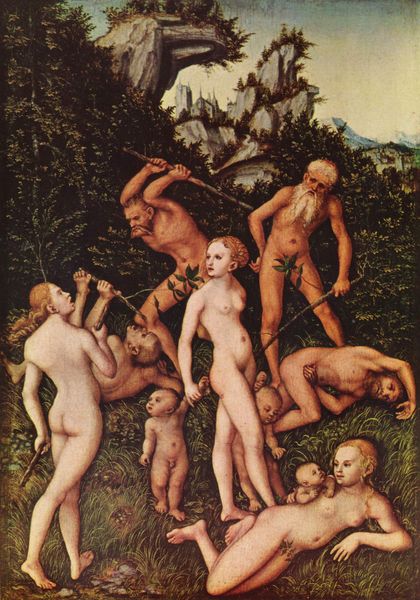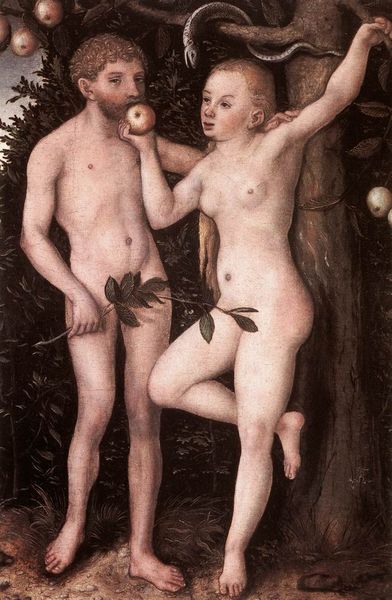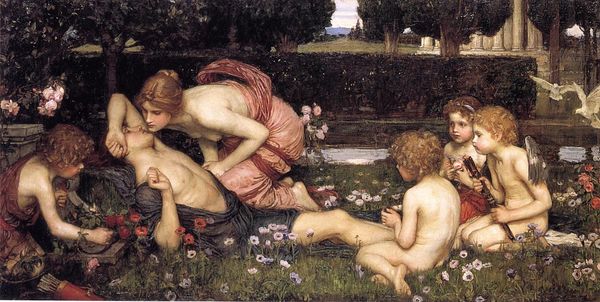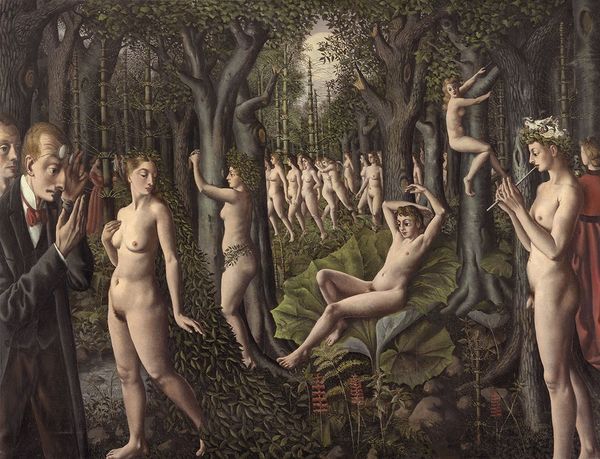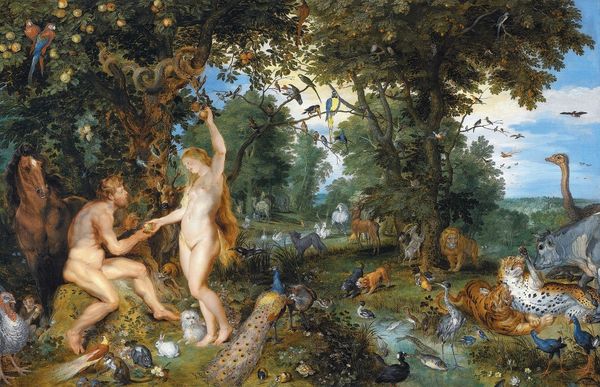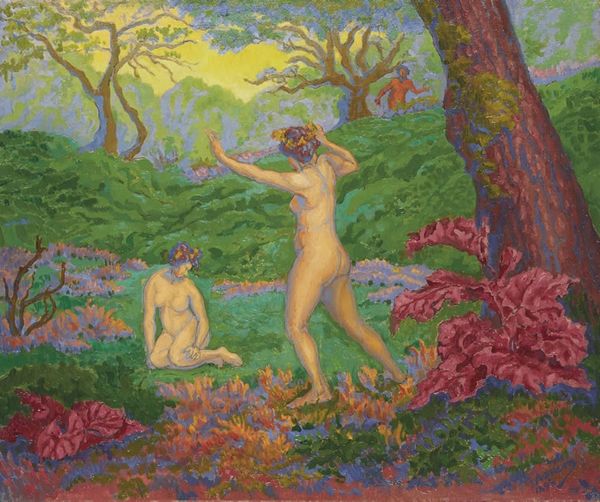
tempera, painting
#
gouache
#
figurative
#
tempera
#
painting
#
landscape
#
figuration
#
genre-painting
#
academic-art
Copyright: Public Domain: Artvee
Curator: This is "Children in an Orchard" painted in 1871 by Pierre Puvis de Chavannes, primarily using tempera and gouache. It depicts four children gathering apples in a lush, green orchard. Editor: My immediate impression is one of idealized innocence. The children almost appear as figures in some ancient Arcadian landscape. There's a timelessness to it. Curator: Indeed. Puvis de Chavannes often sought to evoke a sense of classical harmony and serenity, and that comes through clearly here. Consider his strategic use of flattening the pictorial space, combined with restrained color harmony; what are your thoughts on his conscious simplification? Editor: I notice the symbolic weight of the apples themselves. Beyond just being fruit, apples often signify knowledge, temptation, and, of course, the story of Eden. The figures, almost nude, only add to that association, don’t they? They look like the ancient archetype, carefree youths harvesting the bounty of nature. Curator: Absolutely. But beyond the immediate symbolism, one might see the choice of children here as representing not just innocence, but the future, a new generation. The scene also underscores the importance of community, the communal harvesting contributing to shared well-being, painted so soon after the devastation of the Franco-Prussian war and the Commune, such images of peace took on an added level of urgency. Editor: That historical backdrop gives this a layer of poignant optimism. But let’s consider the symbolism again for a moment: note the idyllic surrounding, in stark opposition to his contemporaries who depicted contemporary figures. I think that he deliberately draws on the established meanings, perhaps to reinforce an eternal message of renewal and the cycle of life. The composition draws our attention towards not an accurate rendition of light or realism. Curator: Right, Puvis de Chavannes often presented figures removed from contemporary urban experience to represent collective civic values. Here, we see this emphasis through the figures' interactions. What remains evocative is how this imagery functions, encouraging civic pride and cultural unity amongst Parisians, perhaps drawing away from an earlier modern life. Editor: Ultimately, it is such powerful images that embed deeply into the cultural memory and inspire our hopes to aspire to. Curator: Precisely; so although on the surface it looks serene, it reveals a deeper purpose about societal aspiration in art.
Comments
No comments
Be the first to comment and join the conversation on the ultimate creative platform.
